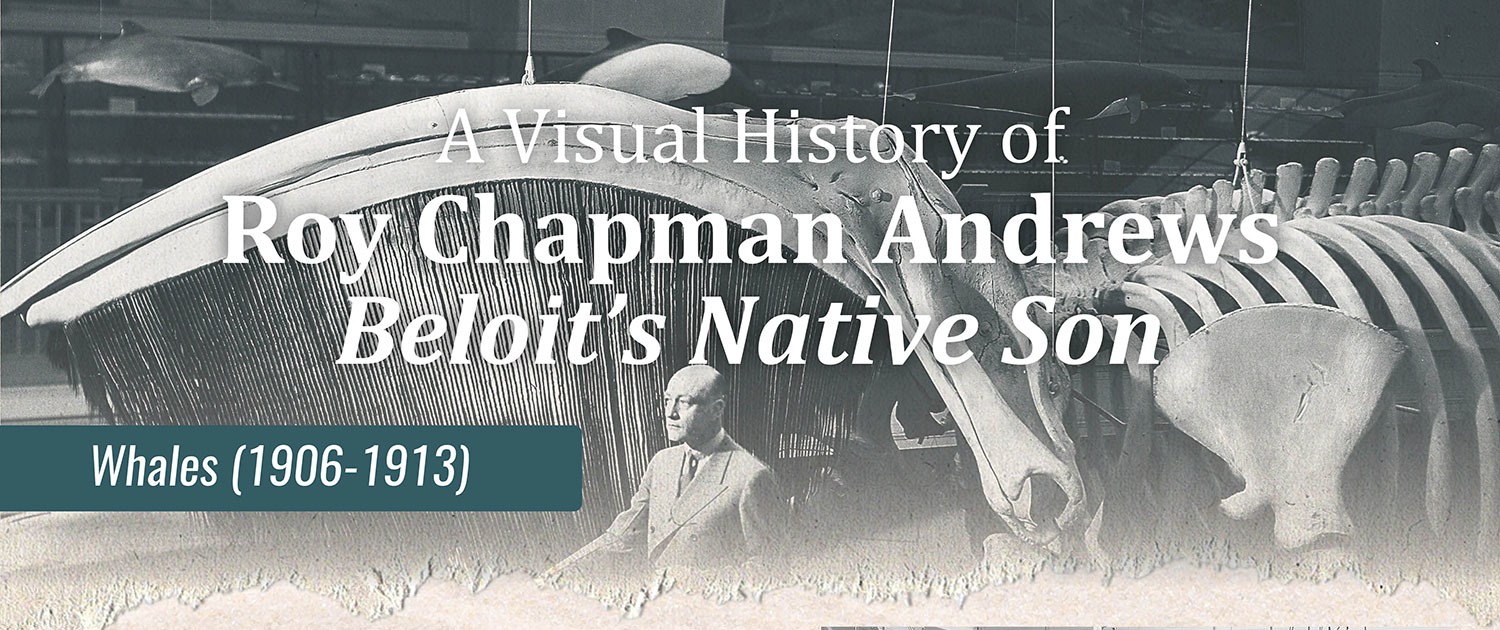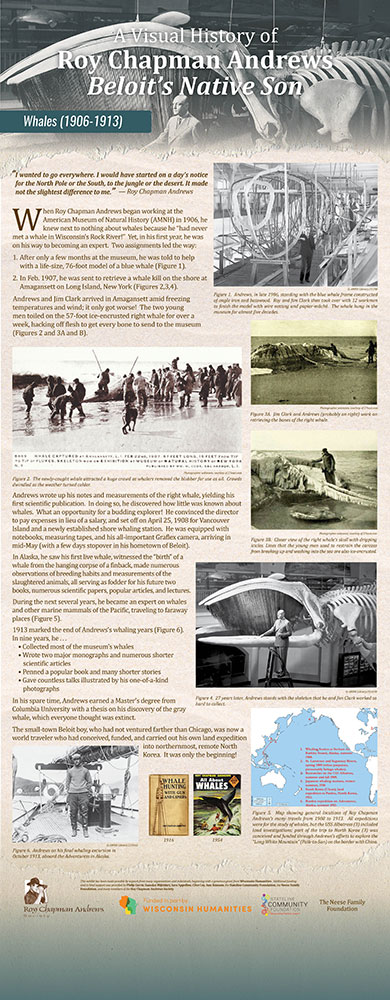Whales (1906-1913)
“I wanted to go everywhere. I would have started on a day’s notice for the North Pole or the South, to the jungle or the desert. It made not the slightest difference to me.”
~Roy Chapman Andrews
When Roy Chapman Andrews began working at the American Museum of Natural History (AMNH) in 1960, he knew next to nothing about whales because he “had never met a whale in Wisconsin’s Rock River!” Yet, in his first year, he was on his way to becoming an expert. Two assignments led the way:
— After only a few months at the museum, he was told to help with a life-size, 76-foot model of a blue whale (Figure 1).
— In Feb. 1907, he was sent to retrieve a whale kill on the shore at Amagansett on Long Island, New York (Figures 2, 3, 4).
Andrews and Jim Clark arriving in Amagansett amid freezing temperatures and wind; it only got worse! The two young men toiled on the 57-foot ice-encrusted right whale for over a week, hacking off flesh to get every bone to send to the museum (Figures 2 and 3A and B).
Andrews wrote up his notes and measurements of the right whale, yielding his first scientific publication. In doing so, he discovered how little was known about whales. What an opportunity for a budding explorer! He convinced the director to pay expenses in lieu of a salary, and set off on April 25, 1908 for Vancouver Island and a newly established shore whaling station. He was equipped with notebooks, measuring tapes, and his all important Graflex camera, arrived in mid-May (with a few days stopover in his hometown of Beloit).
In Alaska, he saw his first live whale, witnessed the “birth” of a whale from the hanging corpse of a finback, made numerous observations of breeding habits and measurements of the slaughtered animals, all serving as fodder for his future two books, numerous scientific papers, popular articles, and lectures.
During the next several years, he became an expert on whales and other marine mammals of the Pacific, traveling to faraway places (Figure 5).
1913 marked the end of Andrews’s whaling years (Figure 6). In nine years, he
— collected most of the museum’s whales
— wrote two major monographs and numerous shorter scientific articles
— penned a popular book and many shorter stories
— gave countless talks illustrated by his one-of-a-kind photographs
In his spare time, Andrews earned a Master’s degree from Columbia University with a thesis on his discovery of the gray whale, which everyone thought was extinct.
The small-town Beloit boy, who had not ventured farther than Chicago, was now a world traveler who had conceived, funded and carried out his own land expedition into northernmost, remote North Korea. It was only the beginning!


